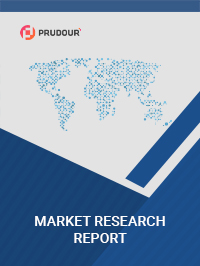
The Report named “Global Rail Market” serves crucial perceptions into global Rail industry along with newfangled industry details, currently dominating players in Rail, chapter wise analysis of each section and looming industry trends, which will guide the readers to target Rail market product Specifications and clients driving the long-term market revenue and profitability.
The Scope of the 2021 Rail Market Report:
This report mainly focuses on Rail industry in the global market. This report primarily covers Rail market in North America, Rail market in Europe, Rail market in Middle East and Africa, Rail Market in Latin America and Asia Pacific. This report segregates the Rail market based on Type, Competitive Players, Regions and Application.
Rail Market : Key Players/Manufacturers Analysis
EVRAZ
ArcelorMittal
Tata Steel
NSSMC
Voestalpine
SAIL
JFE Steel
Mechel
ThyssenKrupp
Atlantic Track
Arrium
Getzner Werkstoffe
Harmer Steel
RailOne
Ansteel
BaoTou Steel
Hesteel
Wuhan Iron and Steel
Hebei Yongyang
Hangzhou Iron and Steel
Xilin Iron and Steel
Rail Market : Type Analysis
Heavy Rail
Light Rail
Rail Market : Applications Analysis
Rail Market : Regional/Counties Analysis
The market is spread across the globe which not only includes Rail market in Europe (Germany, France, Italy, Russia and UK), Rail market in North America (Canada, USA and Mexico) but also Rail market in Asia-Pacific(China, India, Korea and Japan). Now Rail industry is also spread in Middle East and Africa (Saudi Arabia, UAE, Egypt, Nigeria and South Africa)and Rest of the World. Use of advanced technology is constraining the Rail global market in North America. Europe will show a enormous elevation in the growth of global for Rail industry due to increased use of Rail in various fields. Asia Pacific countries such as China and India will show a enormous growth in the Rail global market due to rise in job opportunities.
Global Rail market report also includes Rail Market Business Overview. It also includes Rail Market by Applications and Type, Rail Revenue, Sales and Price and Rail Business Share. This report of Rail Market research also consists Global Rail Market Competition, by Rail market revenue of regions, sales and by Rail industry Competative Players like.(2015-2020).
Report on (2017 Rail Market Report) mainly covers 15 Section keenly display the global Rail market:
Chapter 1 describes Rail Introduction, product scope, Rail market overview, market opportunities, market driving force, market risk;
Chapter 2 analyzes the top competitive players of global Rail, with revenue, Rail industry sales, and price of Rail, in 2019 and 2020;
Chapter 3 displays the competitive situation of Rail among the top competitive players, with sales, revenue and market share in Rail Market in 2018 and 2019;
Chapter 4 shows the global Rail market by regions, with sales, market revenue and share of Rail, for each region, from 2016 to 2020;
Chapter 5, 6, 7, 8 and 9 analyzes the key regions, with revenue, sales, and market share of Rail market by key countries in these regions;
Chapter 10 and 11 shows the worldwide Rail market by type and application, with sales channel, Rail market share and growth rate by type, Rail industry application, from 2016 to 2020;
Chapter 12 includes global Rail market forecast, by regions, type and application, Rail with sales and revenue, from 2021 to 2031;
Chapter 13, 14 and 15 describes Rail distributors, dealers, Rail traders, sales channel, research findings and conclusion, appendix and data source.
Do Inquiry Before Accessing Report Here https://market.us/report/rail-market/#inquiry